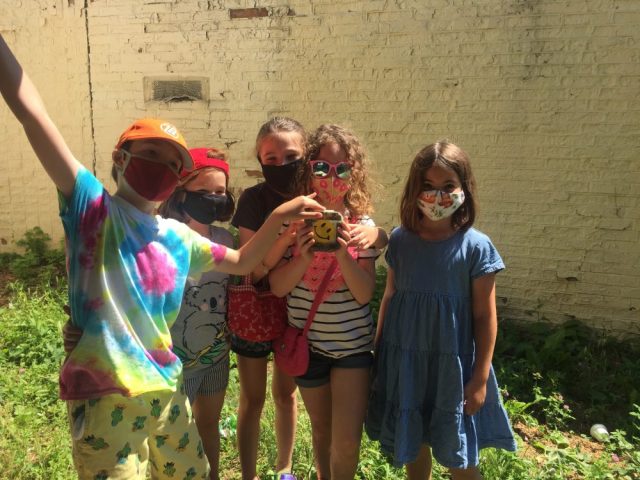As the official geocaching web site geocaching.com puts it: “Geocaching is the real-world treasure hunt that’s happening right now, all around you.” What kid (or person, really) wouldn’t find that statement at least a little bit intriguing? It’s also a free and fun way to spend time as a family and with friends, while also exploring the city. Here’s our guide to getting started and where to geocache in NYC!
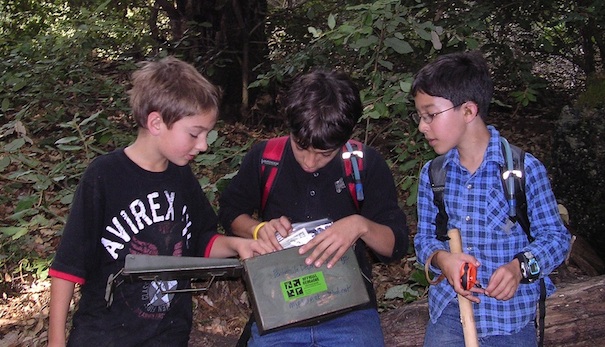
photo: Victoria Prather
The Geocaching Basics
Geocaching (pronounced “gee-oh-cash-ing”) is essentially, a free technology-based worldwide scavenger hunt created by millions of individuals, independently. Little treasures or “caches” are tucked away in public spaces by people and then found by others who log their discovery, both in a roster on site and online. Sometimes, the cache will include a tiny “take one, leave one” token (a patch, a shell, a sticker, an action figure), that finders take, while leaving a similar item behind for the next geocacher to find — but really, this pastime is all about the thrill of the hunt and the discovery.
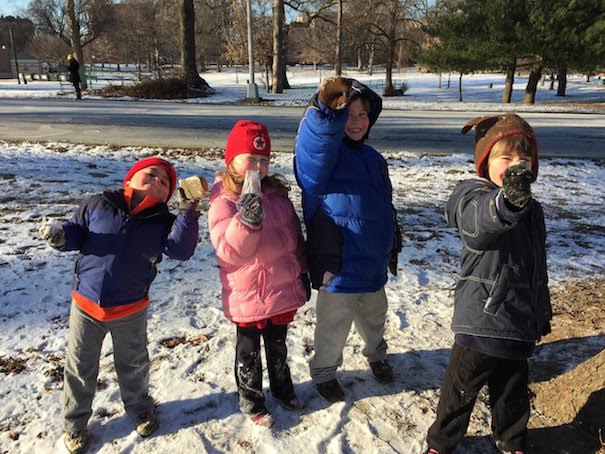
photo: Lisa Schorr
How to Get Caching
Intrigued? (You should be.)
To get started, the basic requirements are simple. You’ll need:
• A smartphone or iPad with GPS/location services or a GPS device
• The Geocaching app or access to geocaching.com via the internet (you’ll need to set up a free account at https://www.geocaching.com)
• A pen or marker to record your discovery of the cache
• A small item to leave at the cache if necessary
• A sense of adventure
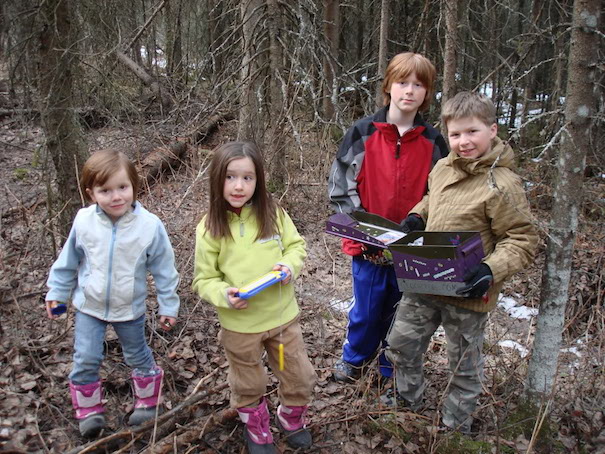
photo: Victoria Prather
On the Hunt
Once you have the basic supplies and have set up your free account, you can enter your location on the app or web site and see precisely how many caches are nearby, and where they are. To date, there are over 2.7 million geocaches worldwide and thousands are right here in New York City as well as the tri-state area. Then, you simply navigate your way to the cache with the aid of your device.
Most caches are containers of varying sizes; the Geocaching app or website will tell you more details regarding the type, the overall difficulty level of finding them, and the terrain you’ll have to traverse on your search — some people stash the cache in more out of the way spots.
Each cache will either have a logbook, a log sheet, and as mentioned above, sometimes even a piece of treasure attached to its find. (The geocaching app will also let you know if the latter is the type you’re seeking.) Caches vary greatly, but the standard rules are the same: under all circumstances, the contents should be family-friendly.
Generally speaking, your first cache should be a simple one. To start, check the app/website for an easy find in terms of difficulty level and make sure that if you’re traveling with a stroller or other child gear, take in consideration the requirements of the location. The details will be spelled out for you within the Geocaching app/website, so you can stick to one that’s easy to find and ensure it’s a fun scavenger hunt for all involved.
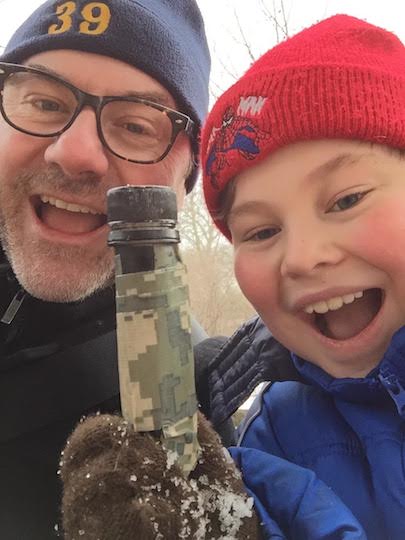
photo: Lisa Schorr
Beginner’s Tips
If you do get stuck, you can find some additional hints within the app/web site to get you back on track.
For basic safety reasons, you’ll want to seek for geocaches during daylight hours and never trespass in an area that is closed.
Also, be sure to keep your detective skills to yourselves. You’re seeking out hidden treasure in a public space, and you don’t want the whole world to see where you’re uncovering the booty! (In the geocaching world, civilians are described as “muggles” — yes, just like in Harry Potter — so be sure you’re keeping your discoveries low-key.)
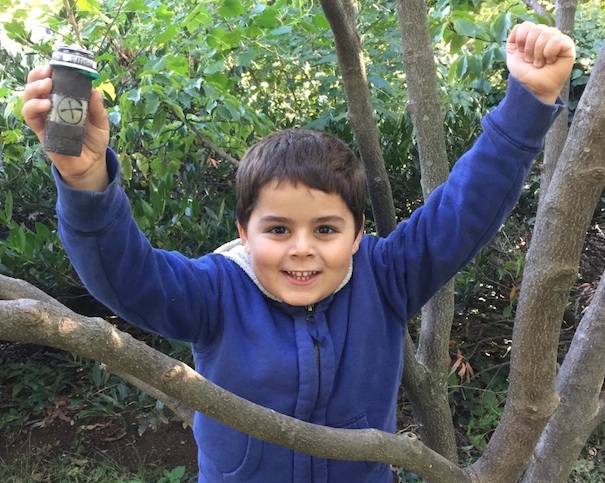
photo: Lisa Schorr
Geocaching The Big Apple
You literally can geocache almost anywhere in the world, which makes it a fun activity to do when traveling, too. (You can even geocache in Antarctica. We checked.) The great news is the New York City is teeming with secret stashes hidden in every borough. (And of course, in New Jersey, Westchester and beyond!)
Densely-cached areas include parks (both Central Park and Prospect Park are rich in caches), as are downtown below 14th Street and Midtown between 34th and 57th Streets. Many areas in Brooklyn, like Red Hook, Carroll Gardens and Bay Ridge are favorite hiding spots for geocachers.
So get going! Before you know it, you and the kids will be creating caches for other newbies to discover!
—Victoria Prather
RELATED STORIES:
NYC Outdoor Family Fun for Fall 2020
Orange Bounty: The Best Pumpkin Patches Near NYC
Where to Eat Outdoors with the Kids This Fall
